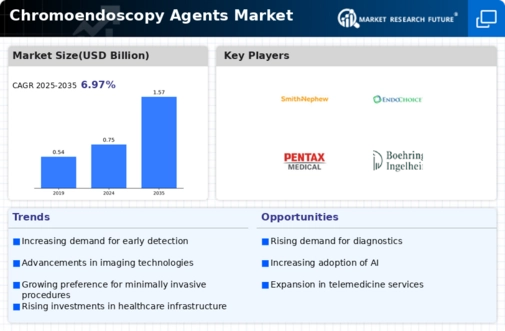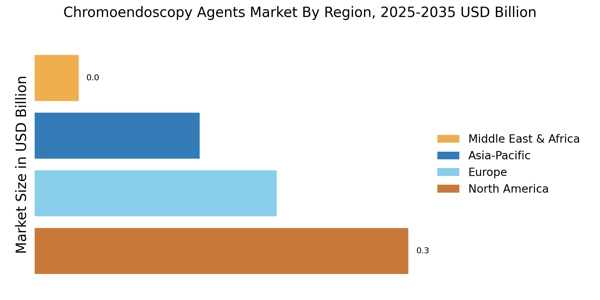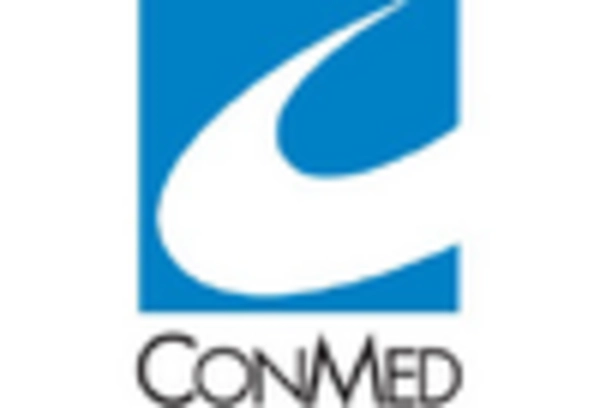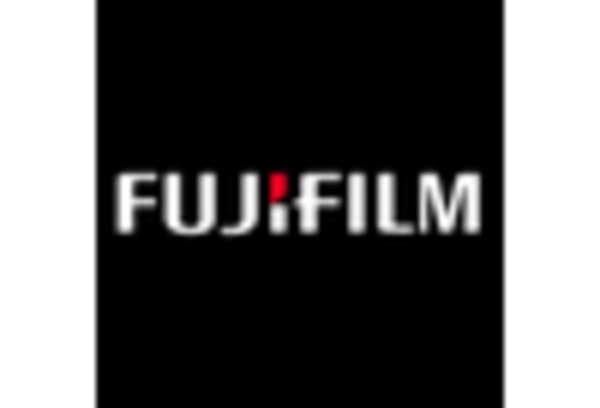Supportive Regulatory Frameworks
Supportive regulatory frameworks are playing a crucial role in the expansion of the Chromoendoscopy Agents Market. Regulatory bodies are increasingly recognizing the importance of chromoendoscopy in enhancing diagnostic accuracy and patient outcomes. This recognition has led to streamlined approval processes for new chromoendoscopy agents, encouraging innovation and market entry. Additionally, guidelines promoting the use of advanced imaging techniques in gastrointestinal diagnostics are being established. As regulatory support strengthens, manufacturers are more likely to invest in research and development of novel chromoendoscopy agents, thereby fostering market growth. The alignment of regulatory policies with clinical needs is expected to create a conducive environment for the chromoendoscopy agents market.
Technological Innovations in Endoscopy
Technological advancements in endoscopic procedures are propelling the growth of the Chromoendoscopy Agents Market. Innovations such as high-definition imaging, narrow-band imaging, and enhanced chromoendoscopy techniques are improving the accuracy of diagnoses. These advancements allow for better visualization of mucosal patterns, which is crucial for identifying lesions and other abnormalities. The integration of artificial intelligence in endoscopic systems further enhances diagnostic capabilities, potentially increasing the adoption of chromoendoscopy agents. As healthcare facilities invest in state-of-the-art endoscopic technologies, the demand for chromoendoscopy agents is likely to rise, reflecting a shift towards more precise and effective diagnostic methods.
Growing Demand for Minimally Invasive Procedures
The increasing preference for minimally invasive procedures is significantly driving the Chromoendoscopy Agents Market. Patients and healthcare providers alike are favoring techniques that reduce recovery time and minimize complications. Chromoendoscopy, being less invasive compared to traditional surgical methods, aligns well with this trend. The ability of chromoendoscopy agents to enhance visualization during procedures allows for more accurate diagnoses without the need for extensive surgical interventions. As the healthcare landscape shifts towards patient-centered care, the demand for chromoendoscopy agents is likely to grow. This trend reflects a broader movement towards adopting technologies that prioritize patient safety and comfort.
Increasing Incidence of Gastrointestinal Disorders
The rising prevalence of gastrointestinal disorders, such as colorectal cancer and inflammatory bowel disease, is a primary driver for the Chromoendoscopy Agents Market. As these conditions become more common, the demand for effective diagnostic tools increases. Chromoendoscopy, which enhances visualization during endoscopic procedures, is gaining traction as a preferred method for detecting abnormalities. According to recent estimates, colorectal cancer cases are projected to rise, necessitating advanced screening techniques. This trend indicates a growing market for chromoendoscopy agents, as healthcare providers seek to improve patient outcomes through early detection and intervention. The Chromoendoscopy Agents Market is thus positioned to expand significantly in response to these healthcare challenges.
Rising Awareness and Education Among Healthcare Professionals
There is a growing awareness and education among healthcare professionals regarding the benefits of chromoendoscopy, which is positively influencing the Chromoendoscopy Agents Market. Training programs and workshops are increasingly focusing on the advantages of using chromoendoscopy for early detection of gastrointestinal diseases. This heightened awareness is leading to a greater acceptance of chromoendoscopy techniques in clinical practice. As more practitioners recognize the efficacy of chromoendoscopy agents in improving diagnostic accuracy, the market is expected to witness substantial growth. The emphasis on continuous medical education is likely to further drive the adoption of these agents in various healthcare settings.


















Leave a Comment